Shortly after the Carnival Liberty docked in Cozumel, we walked briskly down the dock toward the passenger ferry tied to the next pier. Everyone with excursions on the mainland boarded for a journey to varying destinations, ours the Mayan ruins of Tulum.
Once on the mainland, we boarded the bus bound for Tulum while other passengers found the appropriate busses for their chosen excursions. On board our guide for the day, Angel, took up the microphone. He had all sorts of interesting things to say.
He started with the beginning of tourism’s popularity on the Yucatan Peninsula, an area where nobody spoke English. He was the result of a program intended to solve that problem. Growing up, he’d had a variety of English teachers sent to the area from the US to teach local children English so they could work in the growing tourism industry. From that he discovered that not all English speakers sound alike. His teachers over the years came from various regions of the US, and had a variety of accents. The same with French, those from Quebec sounding nothing like people from France. And Spanish of course sounds quite different spoken by someone from Spain rather than Mexico. Through it all though, he managed to learn to speak English quite well, along with French and the Mayan and Spanish he already spoke.
He had two Mayan grandmothers, and said that much knowledge the Mayans once had was only known through passing it verbally from one generation to the next. The early Mayans had a written language from which characters translate phonetically to match our letters. Spanish conquistadors in their determination to convert everyone to their religion destroyed anything they thought might have significance to a religion other than their own so much of what the Mayans wrote got destroyed.
On the way to the ruins, the bus stopped at a Mayan crafts center where they hoped tourists would help support the local economy. Locals carved some of the items on display there from a type of black obsidian that looks gold in sunlight. Angel said upon first sighting Tulum, the Spaniards thought they had found the golden city of El Dorado. When night fell, all that gold turned into black rocks.
Mayan calendars in a variety of sizes lined a large section of wall at the store. We would find none at Tulum, Angel explained, because they made them of wood so the Spaniards had burned the ones originally there. The circular Mayan calendar has 13 months, as they used lunar months following the cycles of the moon. 360 days of the year are covered around the outside, one for each degree of a circle. The middle depicts a person carrying a heavy burden, signifying the remaining 5 days. Each successive year starts at the next equinox, ¼ of the distance farther around the circle than the previous one, accounting for the extra time we now put into leap year.
Angel said the big scare about Mayans predicting the end of the earth in 2012 is like another Y2K scare from people who know nothing about them. Just like our calendars end each year and start the new year with a fresh calendar, so is it the end of an era in their more complicated long count calendar system. Not the end of the planet, just time to reset the calendar. Often articles about the Mayans predicting the end of the earth are accompanied by a photo of a circular calendar with a sun in the center. Which is an Aztec calendar, not Mayan.
When the bus reached the ruins, we had the option of walking to the entrance or taking a tram for a small fee. The walkers actually beat those on the tram, probably because of the time it took to buy tickets and load people on. After gathering the group together again, he led us down a path. We watched other people walk through a tall gate in the wall. “We’re not going in that way,” Angel said. Turns out that gate got rebuilt later by taller people. He took us farther down the path to a gate in the original height built by the Mayans, who stood somewhere in the neighborhood of 4 feet tall. Though tall himself, he said his Mayan grandmothers are both very short.
Once inside, Angel seemed quite eager to impart his knowledge onto our group. Besides the information passed through generations of Mayans, he had also done a college thesis on them, and possessed a wealth of information not found other places. Some of what he said about Tulum seems contrary to most internet sites have to say about it.
Mayan Pyramids are not crypts like those in Egypt, no old mummies lurk inside. Angel said that Tulum was more of a place of worship than a city. The scholars, thinkers and mathematicians lived inside of its walls, the farmers on the outside. Though the farmers had the wealth, they did not have calendars. The scholars told them when to plant and when to harvest.
Mayans had very advanced mathematics, using a binary system similar to the computers of today. A 4-sided Mayan pyramid would have 91 steps on each side. Add that to the bit on top for 365, the amount of degrees in a full circle. The idea of the pyramids came from their numbers, which written form grow higher as the number grows larger. The Mayan symbols representing very large numbers resemble a pyramid.
Everything in the layout of Tulum had a meaning to the Mayans. Temples ran east/west while living areas ran north/south. The large temple now called the castle is placed with an open area between each side of the main center pyramid and the part built on each side. One side frames the sun at the summer solstice and the other at the winter solstice.
When standing facing the temple, you see a smaller structure on the left side. This building depicts a baby at the moment of birth just over its door. I think that is what people refer to as the descending god, but Angel said that building and the placement of the carving over the door had meaning in the representation of a Mayan woman giving birth, and a baby coming out of the darkness into the light. Birth and death as well as the summer and winter solstice in the whole structure all tied into the cycle of life.
The number five had significance to the Mayans. Their weeks had 5 days, they divided their lives into 5 stages, and they lived to the average age of 35. During the five days at the center of their calendar the people gathered inside the walls of Tulum to fast and worship. Tulum had sewers, necessary for a gathering of that size.
Quite advanced in many ways, the Mayans also had plastic surgery. They considered big noses most attractive, and re-sculpted theirs to start high on the forehead rather than between the eyes where noses naturally begin.
The Temple of the Winds warned the Mayans when hurricanes approached. It still works. The winds of Roxanne whistled through its strategically placed holes in 1995 when the storm reached hurricane force.
When Angel finished his talk, we all had free time to explore the ruins on our own or go down to the beach for awhile before catching the bus back to the ship. For ruins, Tulum is in pretty good shape. In Mayan, tulum means wall, and though the wall is a rarity among Mayan ruins, odds are it was not the original name of the place.
Chris and Liza went for a swim. They wore their suits under their clothes, which anyone wanting to swim on this tour should do. I had assumed we’d have a place to change. Other than walking back out to the restrooms near the tram stop by the entrance to the ruins, which we really didn’t have time for, there wasn’t. John never wanted to swim and didn’t bring a suit.
We took some pictures of the ruins and then checked out the shops. I really wanted some sort of jewelry made from the black obsidian that looks gold in sunlight. Just like the first shop we stopped at, none of these had any. Lots of knick knacks out of the obsidian, and jewelry out of other things, but no obsidian jewelry. One guy tried to sell me a pendant for $30. I talked him down to $10 and said if it turned gold in the sun I’d buy it. Walking out into the sunlight in front of his shop it stayed quite black. It stayed at his shop.
Chris brought his mask and snorkel and found a few fish to photograph. Most of the people got back to the bus and we began to wonder if he and Liza would make it. We felt quite relieved when we saw them coming, but then they didn’t get on. Turned out they’d asked if they had time to grab a fish taco before boarding, and though last on they did make it.
This tour pretty much takes the whole time in port. Book through the cruise line because if you don’t get back on time the boat only waits for their official tours. The price on the ship’s tour includes bus and ferry transportation as well as admission to the ruins, and costs far less than some private tours.
More Adventures in Cozumel: Atlantis Submarine, Cave Snorkel, Palancar Reef Snorkel, Playa Mia Beach Park

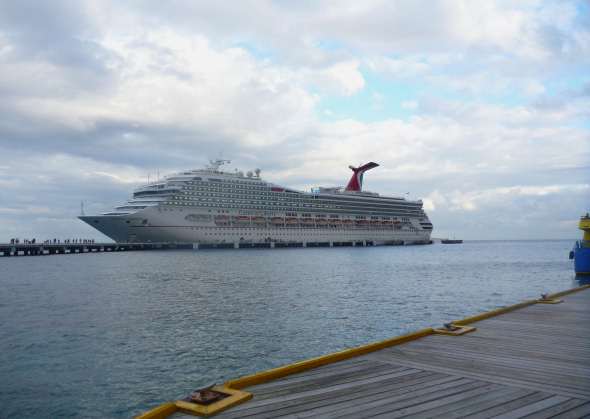

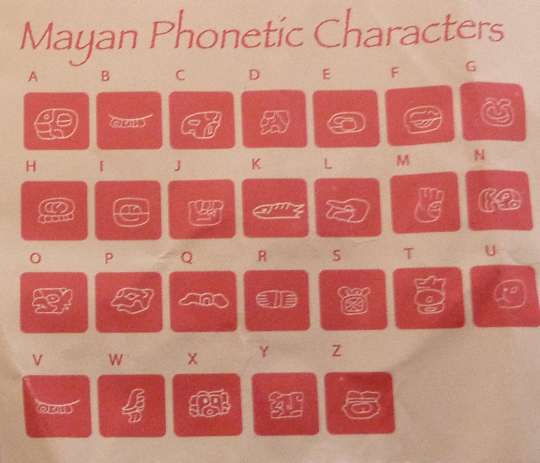
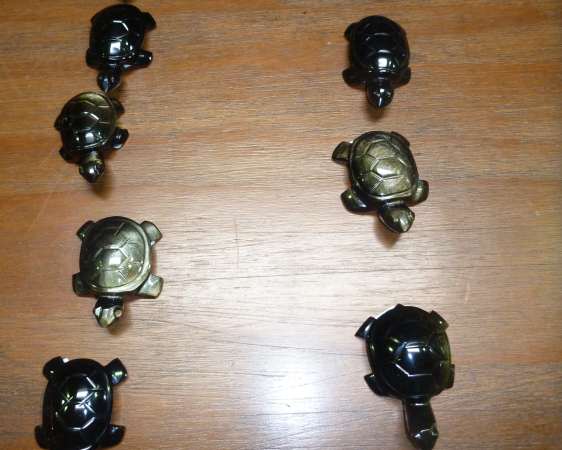
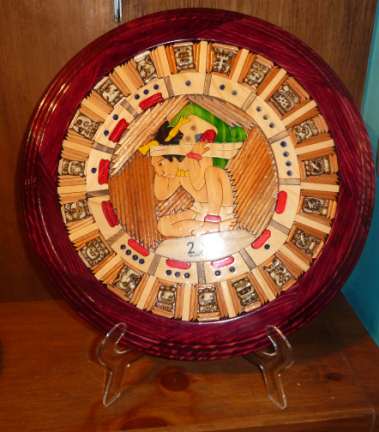
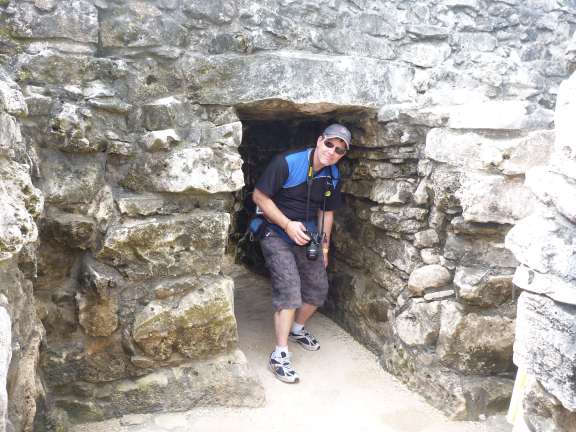
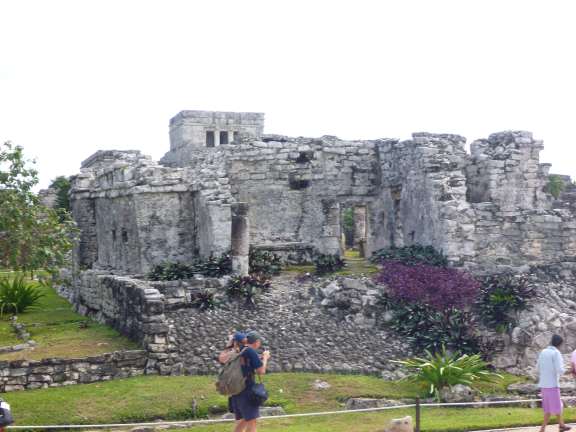
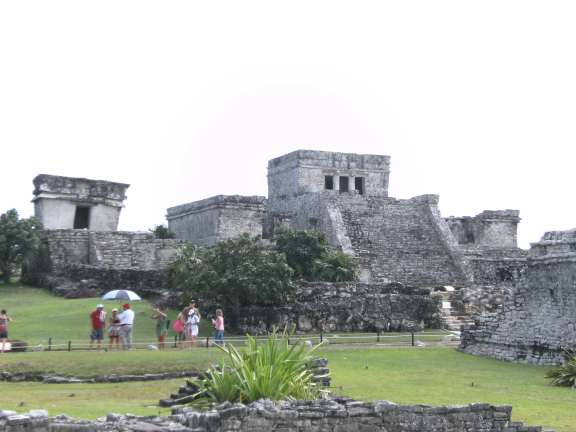
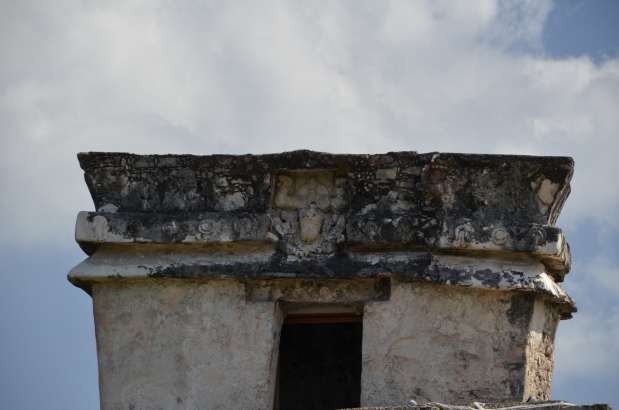
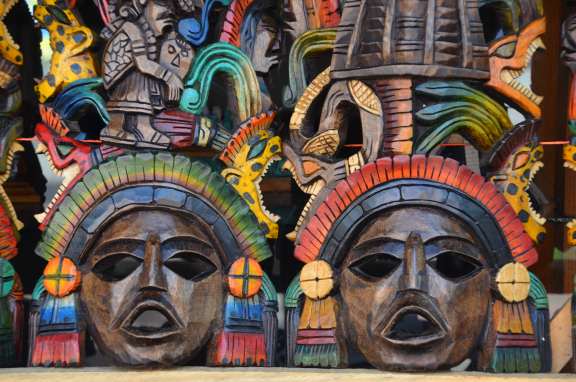
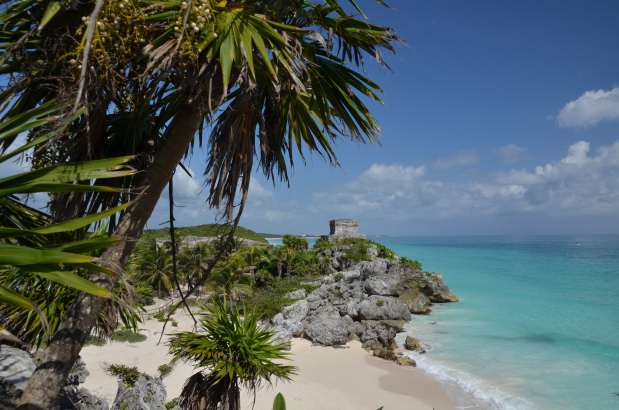
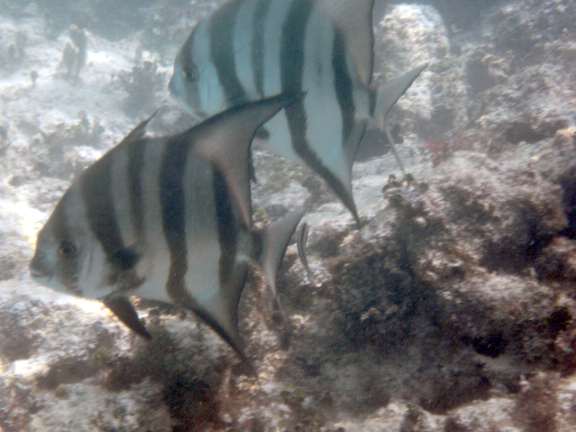
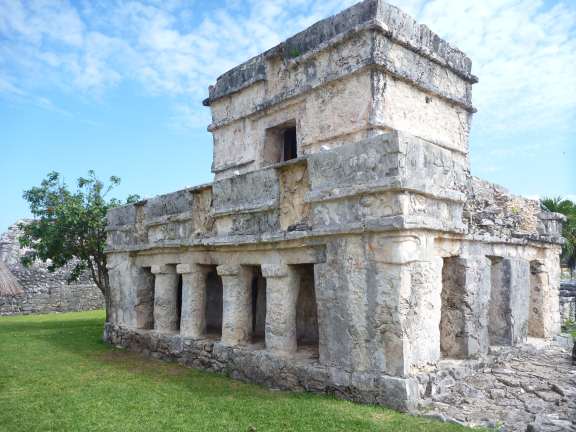
i like it
We also just did a tour with Angel and he was fantastic. Do you have his e-mail address we would like to contact him. He was giving it out but we were in a hurry to get back on the ferry and didn’t get it. Thanks
Sorry, I didn’t get his email address either, but wish I had.
Hi, Angel has his own company by now, still in the guiding industry, if you ever want to hire his services agelnoba@hotmail.com or his facebook page
https://www.facebook.com/yaxkintoursandtravel
Thanks.
Yaxchilan – Mayan ruins in Chiapas MexicoThe Yaxchilan archaeological site is deep in jungle of Chiapas. It is one of the so called Usumacinta Province group which includes several Mayan ruins sites on or close by the Usumacinta river . Yaxchilan is right on the Usumacinta and visitors almost exclusively come via the long boats that navigate the river. There are more than 120 structures in the central area in three complexes. Tours to the ruins can be arranged from hotels in Palenque.
very wonderful place, i positively like this page, thank you
Just returned from a Carnival cruise two weeks ago, Also took the Tulum tour, and Angel was our guide. He was very knowledgeable and passionate about the history and culture.. it was such a wonderful tour